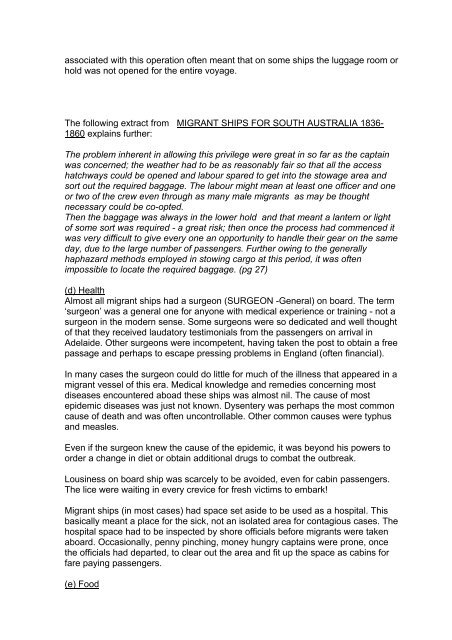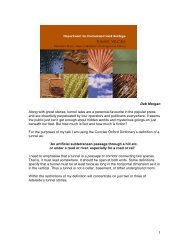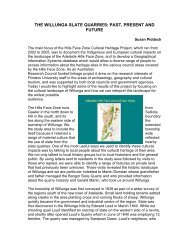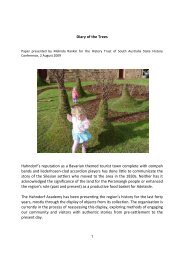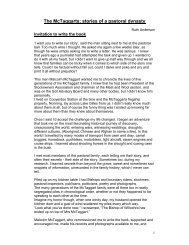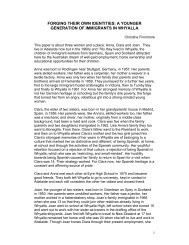Southward Bound Information - History SA
Southward Bound Information - History SA
Southward Bound Information - History SA
Create successful ePaper yourself
Turn your PDF publications into a flip-book with our unique Google optimized e-Paper software.
associated with this operation often meant that on some ships the luggage room or<br />
hold was not opened for the entire voyage.<br />
The following extract from MIGRANT SHIPS FOR SOUTH AUSTRALIA 1836-<br />
1860 explains further:<br />
The problem inherent in allowing this privilege were great in so far as the captain<br />
was concerned; the weather had to be as reasonably fair so that all the access<br />
hatchways could be opened and labour spared to get into the stowage area and<br />
sort out the required baggage. The labour might mean at least one officer and one<br />
or two of the crew even through as many male migrants as may be thought<br />
necessary could be co-opted.<br />
Then the baggage was always in the lower hold and that meant a lantern or light<br />
of some sort was required - a great risk; then once the process had commenced it<br />
was very difficult to give every one an opportunity to handle their gear on the same<br />
day, due to the large number of passengers. Further owing to the generally<br />
haphazard methods employed in stowing cargo at this period, it was often<br />
impossible to locate the required baggage. (pg 27)<br />
(d) Health<br />
Almost all migrant ships had a surgeon (SURGEON -General) on board. The term<br />
‘surgeon’ was a general one for anyone with medical experience or training - not a<br />
surgeon in the modern sense. Some surgeons were so dedicated and well thought<br />
of that they received laudatory testimonials from the passengers on arrival in<br />
Adelaide. Other surgeons were incompetent, having taken the post to obtain a free<br />
passage and perhaps to escape pressing problems in England (often financial).<br />
In many cases the surgeon could do little for much of the illness that appeared in a<br />
migrant vessel of this era. Medical knowledge and remedies concerning most<br />
diseases encountered aboad these ships was almost nil. The cause of most<br />
epidemic diseases was just not known. Dysentery was perhaps the most common<br />
cause of death and was often uncontrollable. Other common causes were typhus<br />
and measles.<br />
Even if the surgeon knew the cause of the epidemic, it was beyond his powers to<br />
order a change in diet or obtain additional drugs to combat the outbreak.<br />
Lousiness on board ship was scarcely to be avoided, even for cabin passengers.<br />
The lice were waiting in every crevice for fresh victims to embark!<br />
Migrant ships (in most cases) had space set aside to be used as a hospital. This<br />
basically meant a place for the sick, not an isolated area for contagious cases. The<br />
hospital space had to be inspected by shore officials before migrants were taken<br />
aboard. Occasionally, penny pinching, money hungry captains were prone, once<br />
the officials had departed, to clear out the area and fit up the space as cabins for<br />
fare paying passengers.<br />
(e) Food


